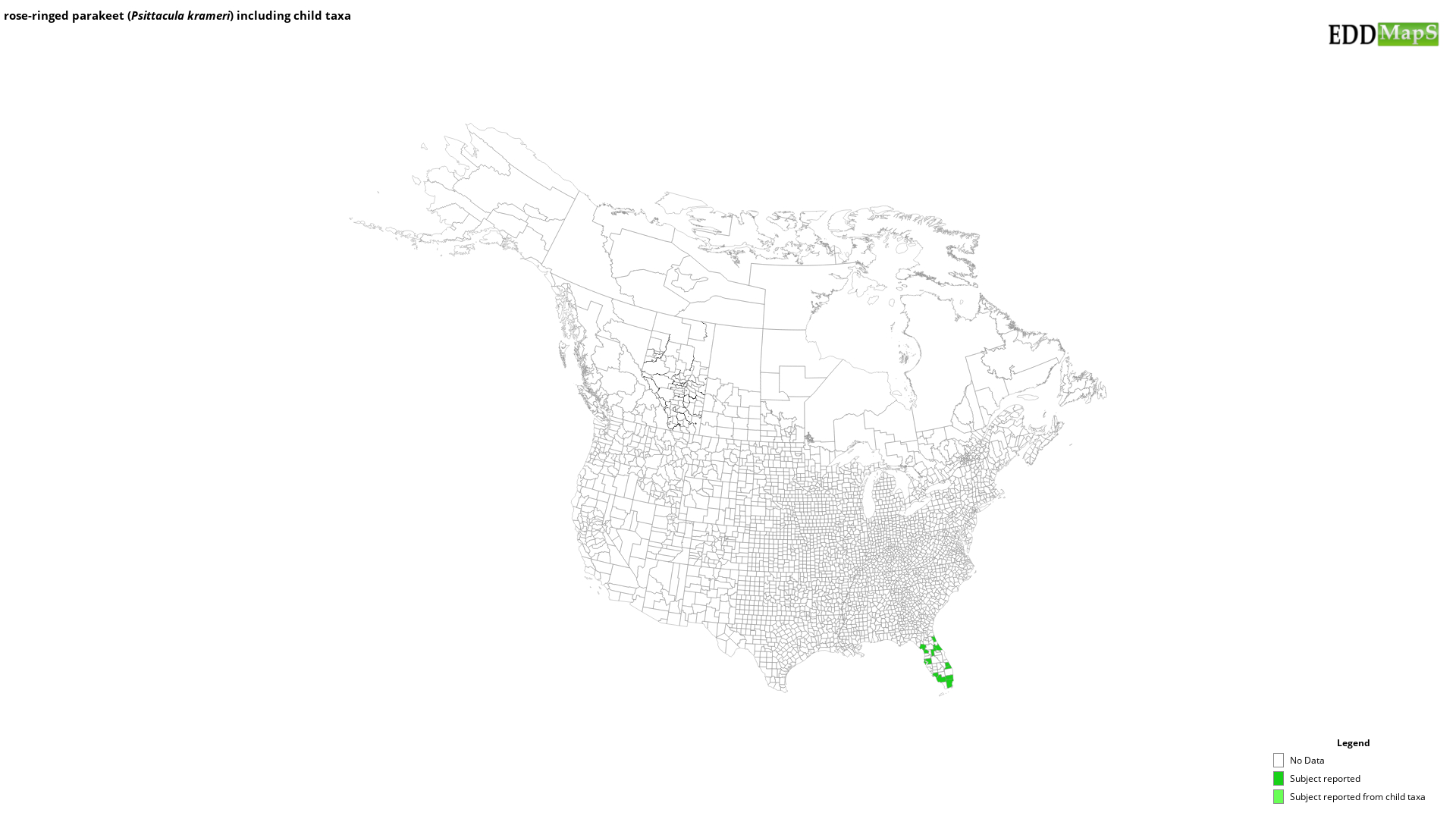rose-ringed parakeet
(Psittacula krameri)
This species is Introduced in the United States
Origin
Psittacula krameri is native to Africa and South Asia. Rose-ringed parakeets were introduced to the United States as escaped or intentionally released pets.
Life Cycle
P. krameri plumage is green in color. Male rose-ringed parakeets have a red and black neck ring while females and young possess no neck ring. Adult P. krameri are 15.6 in. (40 cm) in length and 4.1-5 oz (116-140 g) in weight. Rose-ringed parakeet are highly adaptable with a diet consisting of fruit, berries, seeds, vegetables, and buds. P. krameri are cavity nesters that are highly social and, during the non-breeding season, form flocks of thousands. During the breeding season, females lay 4-6 eggs where they incubation or 23-34 days. After hatching, hatchlings stay at the nest until 7 weeks when they fledge.
Distribution
P. krameri are found in California and Florida.
Control Efforts
The effects of P. krameri on native species is unknown.
https://ebird.org/species/rorpar
https://www.parrots.org/encyclopedia/ringneck-parakeet
Psittacula krameri is native to Africa and South Asia. Rose-ringed parakeets were introduced to the United States as escaped or intentionally released pets.
Life Cycle
P. krameri plumage is green in color. Male rose-ringed parakeets have a red and black neck ring while females and young possess no neck ring. Adult P. krameri are 15.6 in. (40 cm) in length and 4.1-5 oz (116-140 g) in weight. Rose-ringed parakeet are highly adaptable with a diet consisting of fruit, berries, seeds, vegetables, and buds. P. krameri are cavity nesters that are highly social and, during the non-breeding season, form flocks of thousands. During the breeding season, females lay 4-6 eggs where they incubation or 23-34 days. After hatching, hatchlings stay at the nest until 7 weeks when they fledge.
Distribution
P. krameri are found in California and Florida.
Control Efforts
The effects of P. krameri on native species is unknown.
https://ebird.org/species/rorpar
https://www.parrots.org/encyclopedia/ringneck-parakeet
Selected Images
Maps
EDDMapS Distribution - This map is incomplete and is based only on current site and county level reports made by experts, herbaria, and literature. For more information, visit www.eddmaps.org
State Lists - This map identifies those states that have this species on their invasive species list or law.
Taxonomic Rank
| Domain: Eukarya |
| Kingdom: Animalia |
| Phylum: Chordata |
| Class: Aves |
| Order: Psittaciformes |
| Family: Psittacidae |
| Subfamily: Psittacinae |
| Genus: Psittacula |
| Psittacula krameri |
References
Common Name Reference: Integrated Taxonomic Information System on-line database.
Scientific Name Reference: Integrated Taxonomic Information System on-line database.


